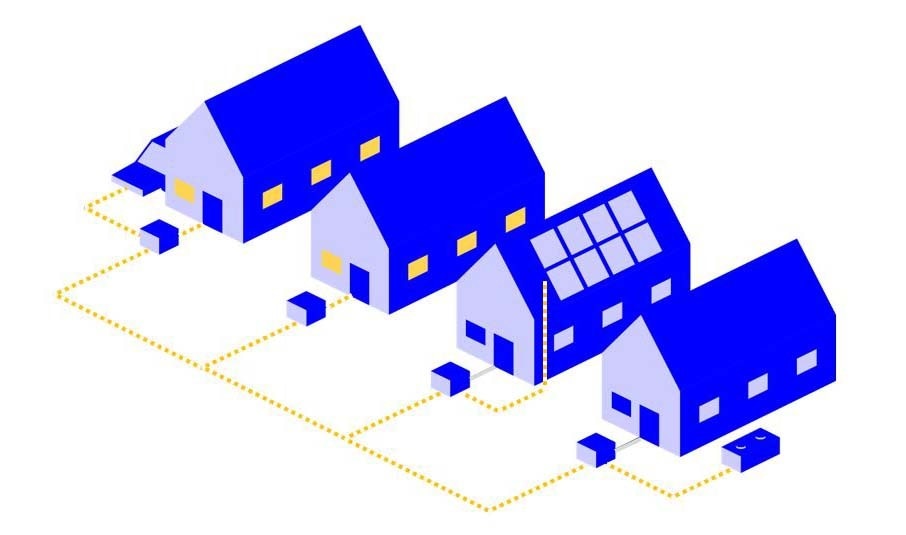Sep 6 2017
If people think that they can use the solar panels on their roofs to power their homes during the event of an outage, then they should think again.
 Researchers have developed an algorithm that allows residential customers to share power from the renewable energy sources in their homes during an outage. (Credit: University of California San Diego)
Researchers have developed an algorithm that allows residential customers to share power from the renewable energy sources in their homes during an outage. (Credit: University of California San Diego)
While the home remains connected to the grid during an outage, the devices that control the solar panels are powered down because of safety reasons. Due to this permanent connection to the grid, homeowners will not be able to draw on the power produced by their own renewable energy resources while they are disconnected from the grid.
Now, a group of Engineers at the University of California San Diego have changed this concept by developing new algorithms. During outages, these algorithms would enable homes to use and share power from their renewable energy sources by strategically detaching these devices, known as solar inverters, from the grid. These algorithms work with current technology and would enhance the reliability of systems by as much as 25 to 35%. The Researchers presented the paper describing the algorithms and their applications at the American Control Conference in Seattle, Washington.
We were inspired to start investigating a way to use renewable power during outages after Hurricane Sandy affected eight million people on the East Coast and left some without power for up to two weeks.
Abdulelah H. Habib, the paper’s First Author and a Ph.D. candidate in Mechanical Engineering at UC San Diego
Both product and revenue can be considerably affected by just a few hours of power outage. In fact, seven million customers experience power outages each year. Outages lasting for more than 5 to 10 minutes cost customers over $80 billion yearly.
How the algorithm works
The capability of the algorithm to prioritize power distribution from renewable resources during an outage is the innovation here. The equations consider forecasts for wind and solar power generation and also the amount of energy storage available, including batteries, electric vehicles, etc. The algorithm combines that data with the amount of energy that would be generated by a cluster of homes and the amount of energy projected to be used by the residents.
Moreover, the algorithm can be programmed to have a priority function, depending upon various parameters. For instance, customers who are ready to pay more can have priority to get power during the event of an outage, or customers who produce more energy than they generate during standard operations would not lose power during a power failure. More significantly, the algorithm can give priority to customers who use life support equipment and are in urgent need of power.
Hardware and storages
The Researchers looked out for an ideal energy storage configuration that would work optimally with their algorithm. While optimal performance can be realized by having energy storage systems in each home, majority of customers favored a community-scale storage system, which significantly reduces costs.
Houses connected together are much more resilient during outages. They’re also more resilient to price fluctuations. They can do a much better job at sharing resources and it benefits every house.
Raymond de Callafon, Senior Author of the paper and a Professor of Mechanical Engineering, the University of California San Diego
While the algorithms work with current technology, each home had to be equipped with circuit breakers that can be controlled remotely — but these devices are yet to become popular . Moreover, utilities would need to install sophisticated communications methods that enable the power systems installed in a residential cluster to communicate with one another.
Further, all homes with solar panels are fitted with inverters, which convert the direct current power produced by the panels into alternating current that circulates on the grid. These so called “grid following” devices can only connect to the grid. In order to bring together a cluster of homes, each home had to be fitted with a “grid forming” inverter, which, in turn, can connect to analogous devices at other residential areas.
Next steps
The next step is to demonstrate that the system is reliable in the laboratory, with both hardware and software in the loop. Lastly, existing regulations would have to change across the country. In many states, owners of individual homes cannot sell power to other residential owners.
Until new regulations come into effect, Researchers say that the technology would also be advantageous to businesses that do not have backup generators and are equipped with renewable power sources that require continuous power.